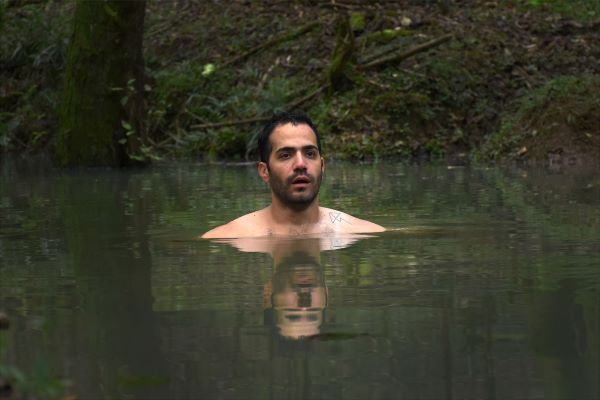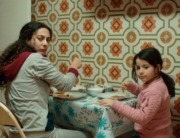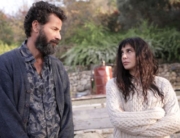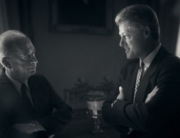
What do you think of the death penalty? Dissident Iranian director Mohammad Rasoulof views this divisive issue from four different circumstances and artistic prisms in his anthology film There Is No Evil. Rasoulof appears to be exorcising shadows from within a subconscious dark interior. At times, his approach feels refreshingly singular, at other times disorienting and opaque.
The first segment opens with a stolid middle-aged man (Ehsan Mirhosseini) carrying a mysterious bundle—it’s a hint at his occupation. We see the bearded fellow go through a daily routine in his car: in looooooooong takes, he picks up his wife, chastises her for forgetting an errand, banters with his sassy daughter, relaxes at home. The baggy padded-out sequence ends with a startling shot that invites the viewers to think back on the lengthy buildup. Was the prelude a testament to the value of life, humanistic in its encompassing detail? Or was it a didactic, needlessly drawn-out lecture on what might appear as the banality of evil? It’s open-ended and manipulative at the same time, but Rasoulof somehow pulls it off.
In contrast to the prologue’s leisurely slice of life, the next interlude plunges viewers into an atmosphere of extreme emotional agitation. Kinetic handheld camerawork follows a military conscript, Pouya (Kaveh Ahangar), anguished at being ordered to put a man to death by the state. After a stagy argument about the unwanted task with his bunk buddies, Pouya attacks and locks up a bureaucrat and a fellow soldier in jittery real time. However, a (highly unlikely) conclusion suggests we’re now in for a kind of madcap Persian version of What’s Up, Doc? The disjointed ending and Ahangar’s trouble with maintaining a consistently believable performance deflate a story of existential desperation.
Desperation of the romantic kind creeps up in the third and most rewarding of the segments, a sensual change of pace. A pretty-boy soldier (Mohammad Valizadegan) arrives to visit his girlfriend in the countryside with a marriage proposal on his mind. More inviting than much of Iranian cinema’s urban snarls, a green forest landscape suggests hope and possibility (and provides a backdrop for a sexy bathing scene). The idyllic mood won’t last though. The young man and woman’s love rots on the vine, the disappointment almost more upsetting than the script’s rather cursory mention of state execution.
The last set piece is the most perplexing of all. A young woman (Baran Rasoulof, the director’s daughter) arrives from Germany to spend time in a sun-drenched desert with her aunt and uncle. She seems rather glib and spoiled, they oddly reticent and tacitly disapproving. This time, the death penalty reference arrives with an aborted fox-hunt and develops from lengthy, dialogue-driven exposition regarding a family secret. The episode ends the way we knew it would—in mistrust and unhappiness.
Rasoulof clearly tries to engage with important ideas in unusual and varied ways. The movie deserves praise for an eclectic four-piece mise-en-scène that eschews moralism and (sometimes) intriguingly withholds information. But sometimes the director communicates in vague, dream-like fragments and symbols; other times, the parallels he draws land heavy-handedly. While the thinking, demanding brain may dismiss parts of There Is No Evil, scenes may linger in less rational corners. Does the film have more power than it appears? Possibly. Statements from dark places often do.
















Leave A Comment